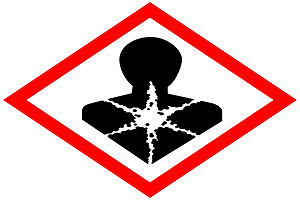Contents
Public Liability Insurance Act 1991
This Act (No.6 of 1991) was enacted on 22-11991 and came into force front 23-1-1991. As mentioned in. its preamble, the Act provides for public liability insurance for immediate relief to persons affected by accident occurring while handling any hazardous substance and for matters connected therewith. The Act has 23 sections.
The statement of objects and Reasons in drafting the bill is reproduced below:
The growth of hazardous industries, processes and operations in India has been accompanied by the growing risks from accidents not only to the workmen employed in such undertakings, but also innocent members of the public who may be in the vicinity. Such accidents lead to death and injury to human beings and other living beings and damage private and public properties. Very often, the majorities of the people affected are from the economically weaker sections and suffer great hardships because of delayed relief and compensation. While workers and employees of hazardous installations are protected under separate laws, members of the public are not assured of any relief except through long legal processes Industrial units seldom have the willingness to readily compensate the victims of accidents and the only remedy now available for the victims is to go through prolonged litigation in a Court of Law. Some units may not have the financial resources to provide even minimum relief.
It is felt essential, therefore, to provide for mandatory public liability insurance for installations handling hazardous substances to provide minimum relief to the victims. Such insurance apart from safeguarding the interests of the victims of accidents would also provide cover and enable the industry to discharge its liability to settle large claims arising out of major accidents. If the objective of providing immediate relief is to be achieved, the mandatory public liability insurance should be on the principle of “no fault”, liability as it is limited to only relief on a limited scale. However, availability of immediate relief would not prevent the victims to go to courts for claiming larger compensation.
The Bill seeks to achieve the above objectives.
Definitions (S. 2):
Accident means an accident involving a fortuitous or sudden or unintended occurrence while handling any hazardous substance, resulting in continuous or intermittent or repeated exposure to death of, or injury to, any person or damage to any property but does not include an accident by reason only of war or radioactivity.
Handling of hazardous substance means the manufacture, processing, treatment, package, storage, and transportation by vehicle, use, collection, destruction conversion offering for sale, transfer or the like of such hazardous substance(vehicle means any mode of surface transport excluding railways).
Hazardous substance means any substance or preparation which is defined u/s 2 (e) of the EP Act and exceeding such quantity notified by the Central Govt.
Liability of Owner:
Every owner shall take, before he starts handling of any hazardous substance, one or more insurance policies to ensure himself against liability to give relief as specified in the schedule given below to any person (other than a workmen, as defined in WC Act) who suffered injury, death or property damage due to any accident. The policy shall be kept renewed. It shall be for an amount more than the paid-up capital or the market value of all assets and stocks, but not exceeding 50 crore rupees. In addition to this, the owner shall also pay to the insurer, together with the amount of premium, further amount, not exceeding the premium and as may be prescribed to be credited to the Relief Fund u/s 7-A. The insurer shall remit this amount to the authority in S. 7-A within a prescribed time.
Schedule of Threshold quantities of Hazardous, substance.

U/S 2(d) of the PU Act, a schedule is notified of hazardous substances. Liability of PU policy arises if hazardous substances are handled in quantity equal to or more than this threshold quantity. For the names and quantities of these hazardous substances (179 and more) the schedule should be referred. Threshold quantities of some of these substances are given below from the schedule.
| No. | Name of hazardous substance | Quantity |
| 1. | Arsine (Arsenic hydride) | 10 kg |
| 2. | Benzidine | 1 kg |
| 3. | Mithyl isocynate | 150 kg |
| 4. | Phosgene (Hydrogen phosphide) | 750 kg |
| 5. | Acrylonitrile | 20 t |
| 6. | Ammonia | 50 t |
| 7. | Bromin | 40 t |
| 8. | Carbon disulphide | 20 t |
| 9. | Chlorine | 10 |
| 10. | Ethylene dibromide | 5 t |
| 11. | Formaldehyde (concentration <90%) | 5 t |
| 12. | Hydrogen chloride (liquefied gas) | 25 t |
| 13. | Hydrogen cynide | 5 t |
| 14. | Hydrogen fluoride | 5 t |
| 15. | Sulphur dioxide | 20 t |
| 16. | Sulphur trioxide | 15 t |
| 17. | Acetylene | 5 t |
| 18. | Ethylene oxide | 5 t |
| 19. | Hydrogen | 2 t |
| 20. | Liquid Oxygen | 200 t |
| 21. | Nitroglycerine | 10 t |
| 22. | Tri-nitrobenzene | 50 t |
| 23. | Highly flammable liquids: Substances which have a flash point lower than 21°C and the boiling point of which at normal pressure is above 20°C. | 1000 t |
| 24. | Flammable liquids: Substance which have a flash point lower than 55°C and which remain liquid under pressure, where particular processing conditions, such as high pressure and high temperature may create major accident hazards. | 25 t |
Schedule of Relief
- Reimbursement of medical expenses upto Rs. 12,500 in each case.
- For fatal accident Rs. 25,000 per person in addition’ to (1) above.
- For permanent total or partial disability, injury or sickness, reimbursement of medical expenses up to Rs12,500 and cash relief based on percentage disablement certified by an authorized doctor, the relief for total permanent disability being Rs 25,000.
- For loss of wages due to disability Rs. 1000 per month up to 3 months provided the victim is above 16 years and hospitalized for at least 3 days. (S. 3 & 4).
- Up to Rs. 6000, for damage to private property.
Relief Procedure
The Collector shall verify the occurrence of an accident in his jurisdiction and cause publicity for inviting relief applications (S. 5) Application (in Form 1) shall be made to the Collector within 5 years of the accident. The Collector, shall hold inquiry and give award of relief within 3 months of the receipt of relief application. The insurer or/land owner shall deposit the amount as directed by the Collector, within 30 days of the award. The Collector shall arrange to pay from the Environment Relief Fund established by notification of the. Central Govt. In addition to relief under this Act, right to get compensation under any other law is also maintainable but in that case the owner has right to reduce (deduct) the amount paid as relief under this Act (S. 5 to 8).
The Central Govt. can authorize any person to ascertain requirements of this Act and that person shall have a right of entry and inspection, search and seizure, removing hazardous substance at the cost of its owner (5. 9 to 11), the Central Govt. has power to give directions to any person, officer, authority, agency etc. including the direction to prohibit or regulate the handling of hazardous substance or to stop or regulate electricity, water or any other service (s. 12), the Central Govt. or the authorized person can apply to Court for restraining owner from handling hazardous substance and in that case the Court may direct the owner to desist from such handling or authorized the applicant to implement the direction at the cost of the owner (S 13).
Provisions are also made for offences by companies (S.16), offences by Govt. Departments (S.17), cognizance of offence by the authority or by any person who gives notice of at least 60 days of his intention to complain about the alleged offence, before the authority (S.18), power to delegate (S.19), protection of action in good faith (S.20), advisory committee (S.21), this Act has effect despite anything inconsistent therewith (S.22) and rule making power of the Central Govt. (S.23).
Public Liability Insurance Rules 1991:
The Central Govt. u/s 23 of the Public Liability Insurance Act made these rules which came into force on 1-5-1991. They have 11 rules and 2 Forms. Their abstract is as under
A relief application shall be made to the Collector in Form-l (R.3) accompanying the relevant documents such as disability/illness certificate from an authorized physician. death and/or post-mortem certificate, birth or age certificate, proof of hospitalization for more than 3 days, employers certificate for loss of wages, medical bills and receipts, repairing or replacement cost certificate regard damaged‘ property etc. (R.4).
The Collector has all the powers as prescribed in Rule 5 and shall maintain a register of claim applications, awards and payment made, shall keep it open for public and give copy on request (R.7).
All directions u/s 12 shall be in writing, the objections or may not be invited and the proposed action may be confirmed modified or withdrawn and the notice may be served as prescribed (R. 8)
For cognizance of offence u/s 18, notice in Form-TI shall be sent to the authorities mentioned in R9.
Maximum liability of the insurer to pay relief is Rs. 5 crores (to several claimants) in case of one accident and Rs.15 crores in case of more accidents during one year or the period of policy whichever is less. If the award amount exceeds this limit, it shall be met with from the relief fund and in case it still falls short, the balance amount shall be payable by the owner. (R. 10).
Owner’s contribution to the Environmental Relief Fund shall be equal to the premium payable to the insurer and it shall be paid along with the premium to the insurer. The contribution so received shall be remitted as per-the scheme u/s 7-A.
Form – I: Application for compensation (claim).
Form – II Notice for cognizance of offence.





